What Is the Difference Between Art Deco and Mid-Century Modern? Here's What Characterizes Each of These Iconic Design Styles
The two design styles have become the backbone of contemporary interiors, which is why understanding the similarities and differences is important
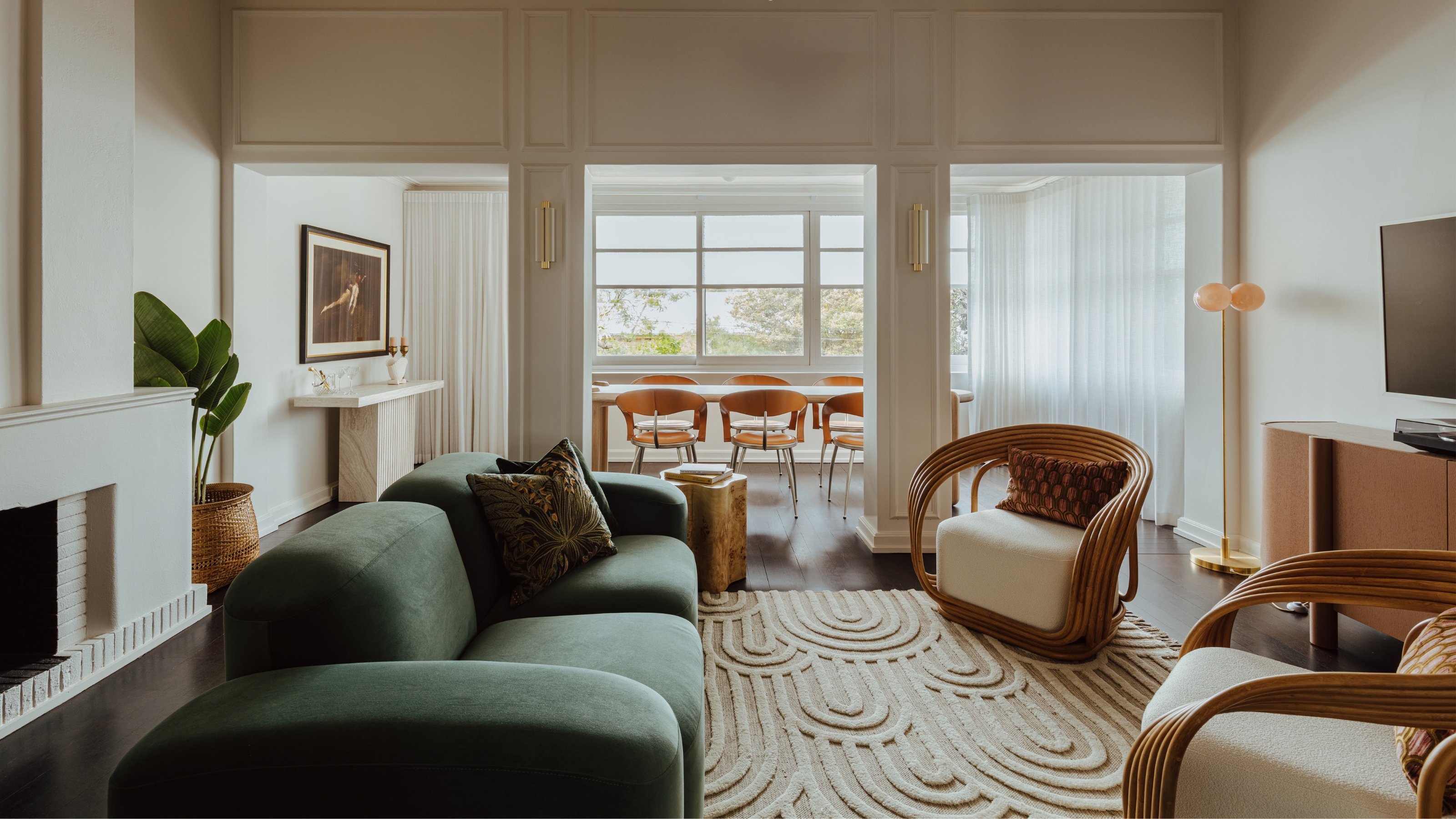

What comes to mind when you read the words Art Deco vs Mid-Century? Perhaps the former evokes images of speakeasy-style bars with mirrored glass cabinets, while the latter might bring to mind an Eames chair next to modular shelving and a console table. But perhaps you're not actually sure which is which.
While most people know that both these interior design styles are iconic, it can be harder to actually distinguish them — especially since they've both gone on to influence contemporary interiors today.
Art Deco interior design originated in the early 1900s, a few decades before the Mid-Century movement. The former gravitated towards geometric shapes, precision, and opulence, while Mid-Century Modern homes express themselves through a shifting desire for function over extravagant form.
But to really understand the difference between Art Deco vs Mid-Century Modern design on a deeper level, I asked interior and design experts, who shared the similarities, differences, and how to style them in homes today.
Art Deco vs Mid-Century Modern: A Short History
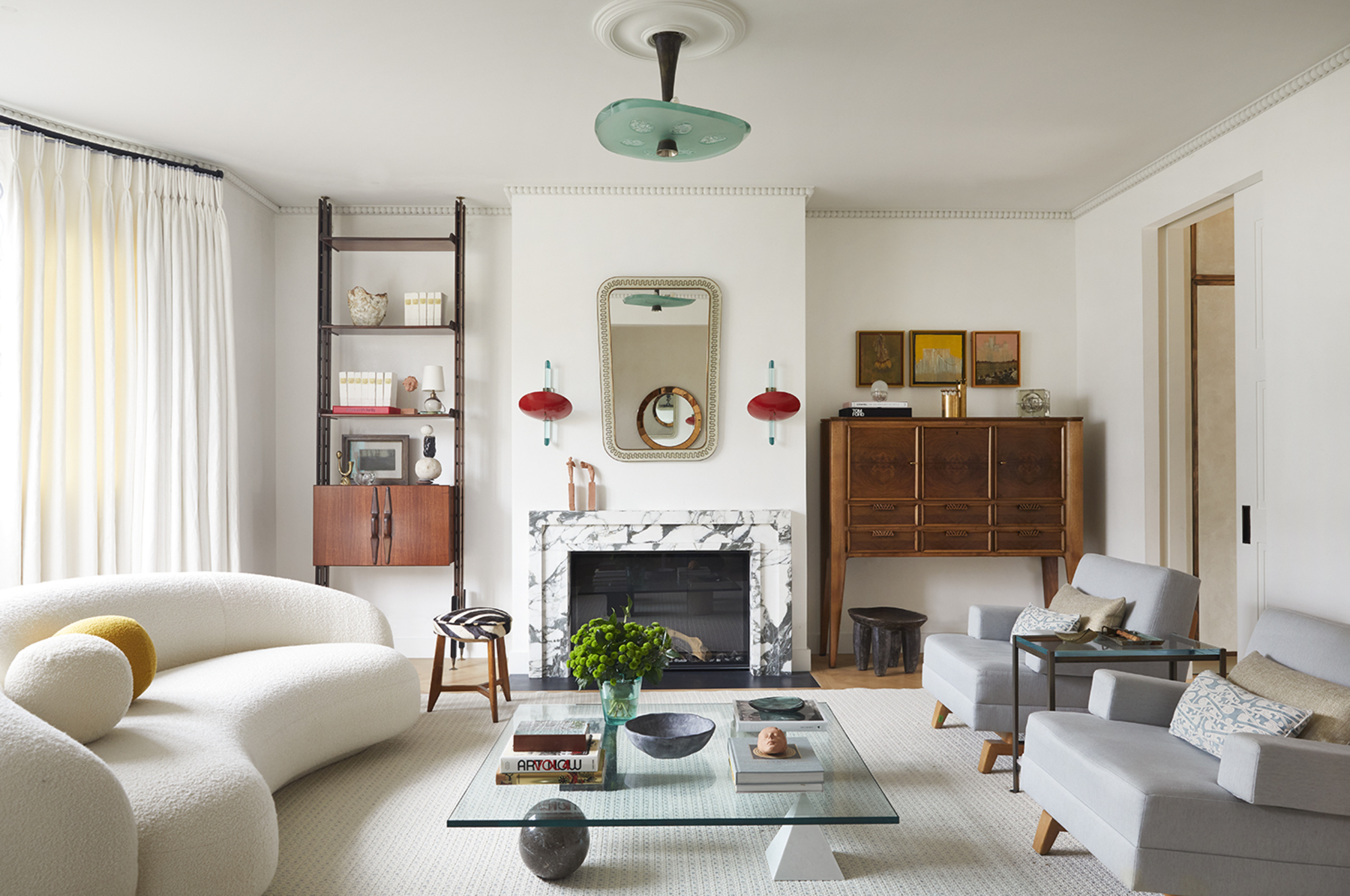
A blend of the two design styles is on display in this modern living room.
Knowing a bit of history and the time period behind these two design movements is integral to understanding their respective nuances. Art Deco arrived after World War I and peaked in popularity in the ever-opulent roaring 1920s and 30s.
"It's known for handcrafted luxury and theatrical flair, with geometry, symmetry, and expensive materials," explains Chicago-based, fine art and antique appraiser, Lindsey Owen. "The goal was modernity, but modernity with polish and spectacle."
Jump forward a few years to the 1940s, and furniture production shifted yet again. Factories, not specialty workshops, became the primary source for the modern home. "The focus moved away from handcrafted heirlooms toward efficient, reproducible design," says Lindsey. Enter: Mid-Century Modern.
The Livingetc newsletters are your inside source for what’s shaping interiors now - and what’s next. Discover trend forecasts, smart style ideas, and curated shopping inspiration that brings design to life. Subscribe today and stay ahead of the curve.
Materials were influenced by what was available during the Second World War, and Mid-Century Modern furniture styles became lighter, more modular, and better suited to smaller, open-plan homes. Plus, the ornamentation of Mid-Century's predecessor was often eliminated entirely.
"With Mid-Century Modern style, designers prioritized clean lines, asymmetry, and comfort," says Lindsey. By the early to mid-1950s, key pieces that we still love today, such as the Eames lounge chairs, Saarinen tulip tables, and streamlined credenzas, emerged.

Lindsey Owen is a certified member of the International Society of Appraisers. Lindsey gained a Master's degree in Art History from the University of Chicago and went on to open her own art consultation firm, Lindsey Owen Appraisals, in 2020.
The Similarities and Differences of Art Deco vs Mid-Century Modern
Just like the generational relationship that exists between Art Deco and Art Nouveau, there are key similarities and differences when comparing Art Deco and Mid-Century Modern design.
These include things like common color palettes, textures, materials, and certain motifs that were used. Below, I've broken each element down, to help you ascertain which era the furniture piece or room you're looking at belongs to.
Color Palettes

The bold, jewel-tone color palette of Art Deco style is on full display in this vibrantly vintage living room.
Art Deco color palettes are full of rich and moody jewel tones. On both larger furniture and small decor, you'll often find colors like sapphire blue, emerald green, ruby red, peacock blue, canary yellow, and even metallics. Decorating with jewel tones brings that lush elegance while also feeling vintage-inspired.
On the other hand, "Mid-Century Modern began with earth tones in the 1940s and expanded to include bright pastels and synthetic hues in the 1950s and 60s," explains Lindsey. "These palettes echoed the optimism of the postwar economy and the growing influence of car culture."
Blush pink, red, mustard yellow, sage green, and burnt orange are the colors that will best bring a mid-century modern living room to life. Think solid colors without any prints, patterns, or motifs.
Textures and Materials
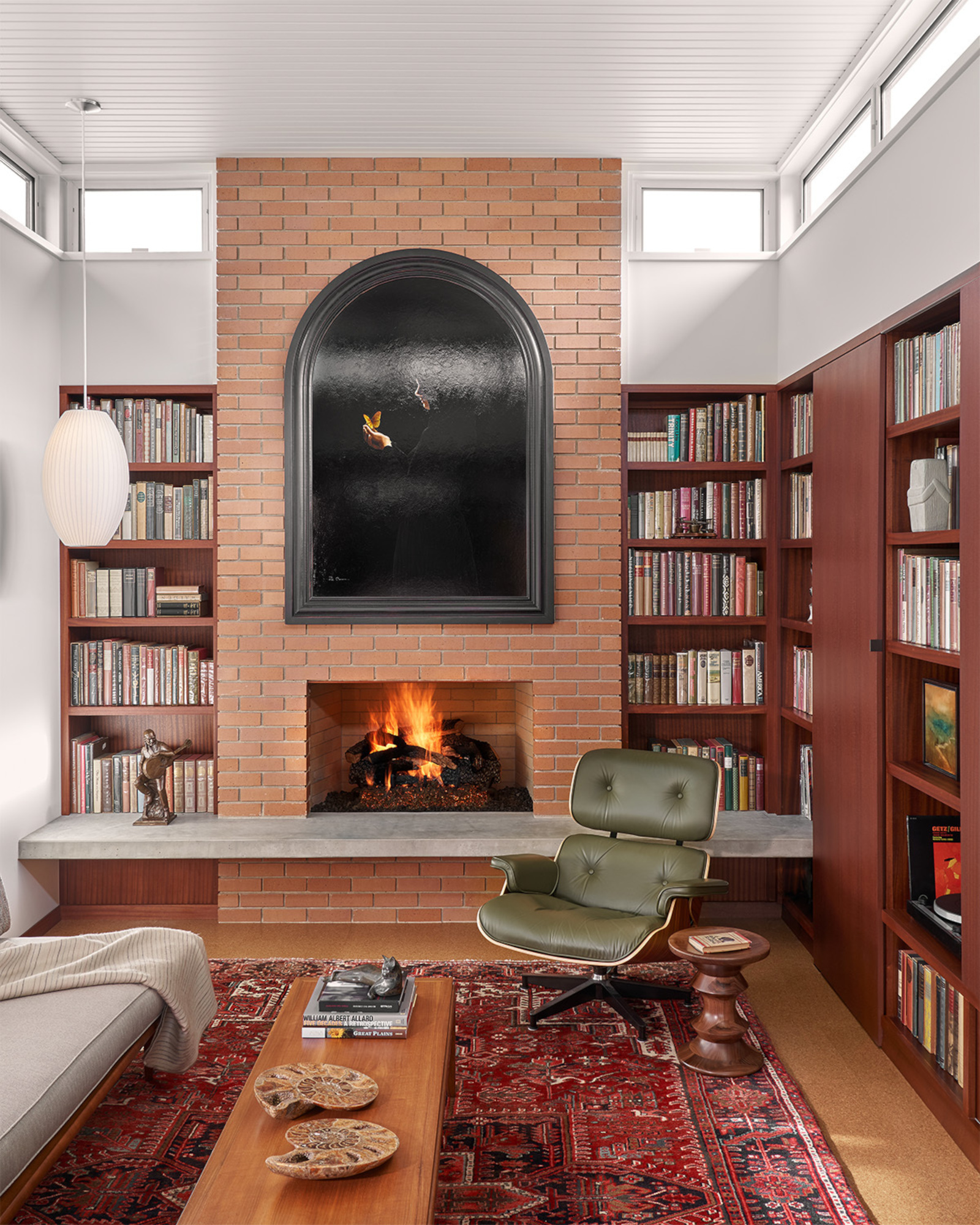
Mid-Century styles adorn this space, which includes arguably the most iconic furniture piece from the era: the Eames chair.
When it comes to the materials and textures commonly found in these design styles, interior designer Louise Booyens, founder of Louise Booyens Interiors, explains that, "Art Deco combined traditional craftsmanship with modern, man-made materials to create a sleek and elegant aesthetic."
Common materials included mirrored glass, chrome decor, lacquered finishes, and stainless steel. Luxurious elements such as gold, marble, ebony, and rare exotic woods and veneers were also commonly featured.
Mid-century materials, once again, were more pared back. The opulence may have gone, but that's not to say style was lost entirely. "Mid-century modern often mixed materials to create contrast in interior design and innovation," explains Louise. "Popular choices included teak, other warm-toned woods, metal, glass, and vinyl."
Furniture often combined a few of these elements. For example, mixing chrome and wood in a single coffee table, or incorporating a vinyl-upholstered chair with wooden legs. "Light-colored woods such as birch and maple became more popular, contrasting with the dark, glossy finishes of the Deco period," adds Lindsey.
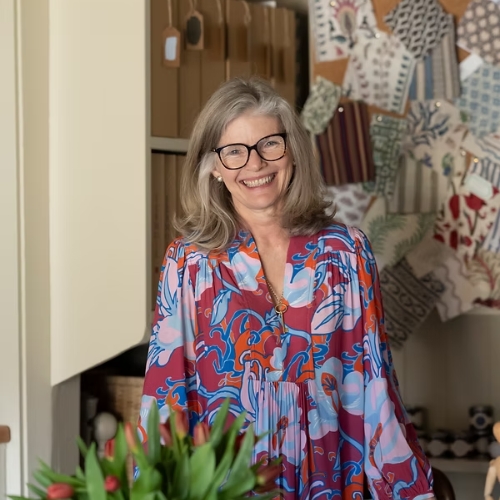
Louise Booyens is a Norfolk-based interior designer, specializing in designs for period homes. Louis has a degree in heritage interior design and a zealous passion for historic interiors. Having worked on charming period cottages, listed country houses, townhouses and village rectories, Louise Booyens Interiors offers a flexible, individually tailored service that blends contemporary design with respect for the home's history.
Motifs
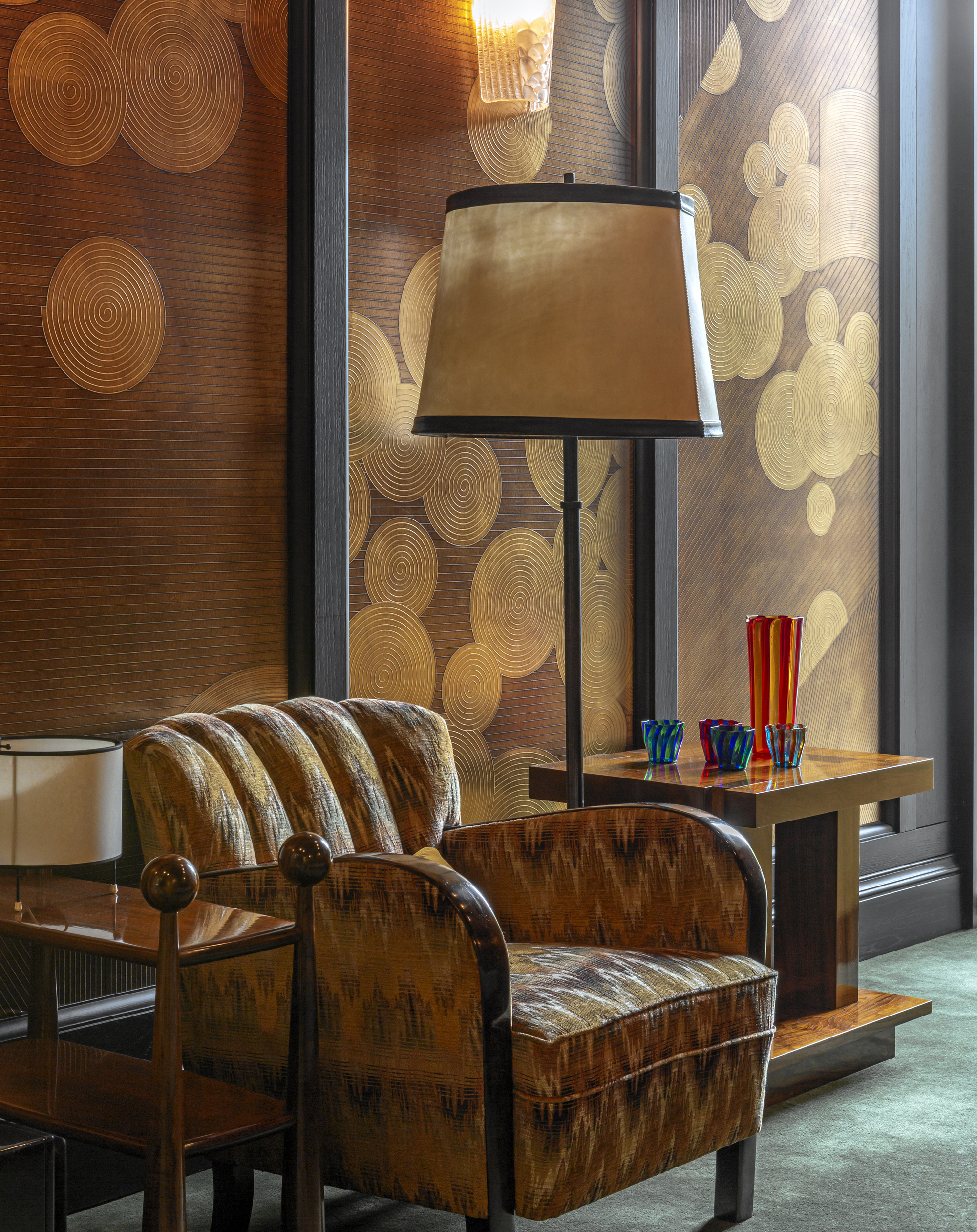
There are certain patterns, prints, and motifs that have become synonymous with the Art Deco era.
Motifs and patterns are always a strong indicator of the period or design era, but Art Deco most especially calls to mind some familiar motifs. When thrifting an Art Deco aesthetic, look for patterns that are symmetrical and bold. These motifs often featured sunbursts, zigzags, chevrons, and Egyptian, or industrial inspirations.
Mid-Century patterns were adapted for the time they were popular. These motifs are more abstract or nature-inspired. Atomic shapes, boomerangs, and minimalist botanical prints are prominent.
"You can see cross-pollination from Art Deco in the earlier Mid-Century style, like metal accents and bold graphic forms of Deco glamour," explains Lindsey. "But by the very definition, the former leans dramatic, and the latter prioritizes functionality."
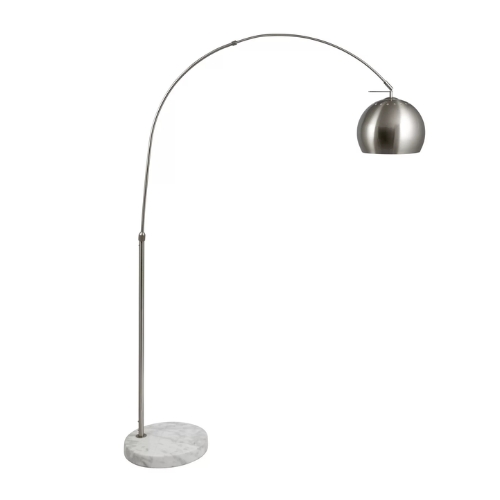
This brushed metal, arched floor lamp is inspired by the iconic Arco floor lamp design by Achille and Pier Giacomo Castiglioni. We have seen this style re-emerge as mid-century has circled back into contemporary trends. The base is made from marble, steel, and iron for a living room lighting look that is quietly sophisticated.

Mid Century is often defined by function over ornamentation, and frequent use of materials like natural wood, metal, and vinyl. This TV cabinet has a sophisticated mid-century look that puts function first with its simple yet still stylish design.
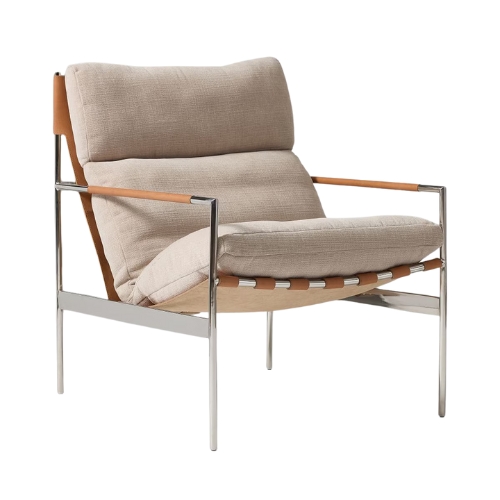
This chair highlights a few key mid-century characteristics while creating a design that feels more contemporary. The tulip chair by Saarinen, the mushroom chair by Pierre Paulin, and the famous Eames chair are a few more iconic chairs to explore from the mid-century period.
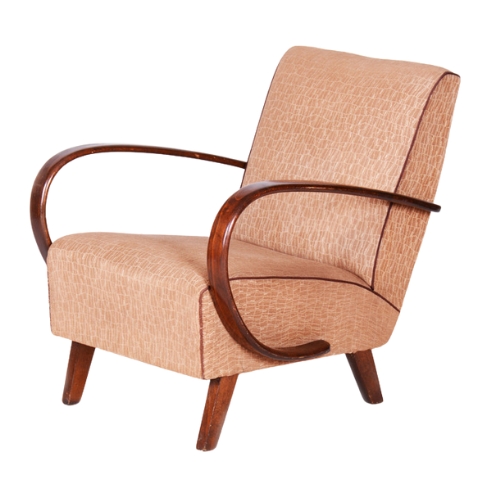
This chair is listed as an original 1930s Art Deco piece. The curved arm rests are a giveaway do to their more ornamental nature. Also, the pattern on the upholstery has a subtle geometric print. However, this is definitely a piece you could style in a more Mid-Century room.
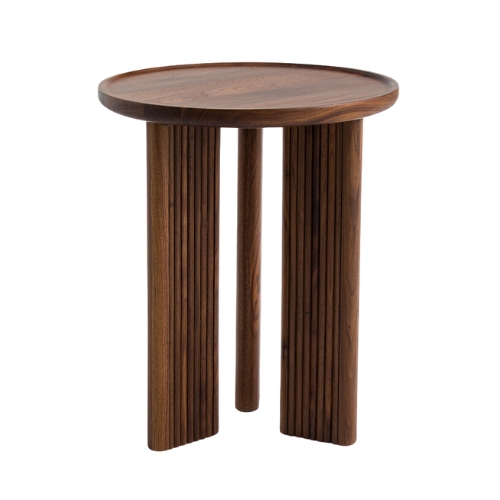
Art Deco furniture is typically large and sturdy, normally made from man-made materials, while still incorporating the iconic shapes of the movement. The fluting on this dark walnut side table give it a more Deco-inspired edge.
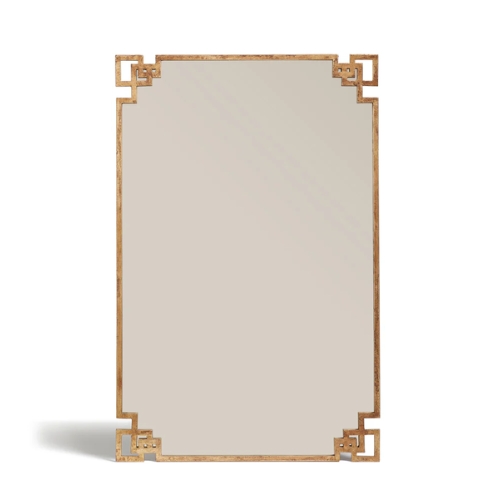
This mirror is a classic example of Art Deco motifs. Sculptural and elaborate in design, think curvy vanities, mirror-lined armoires, and inlays that fill a space. "Furniture from this period often features bold silhouettes, sunburst motifs, and stylized references to antiquity," says Lindsey.
When it comes to designing your own space, understanding the similarities and differences between Art Deco vs Mid-Century Modern design can help you to curate an inspired interior that still feels honest and cohesive.
Today, even the latest interior design trends take influence from the opulence of Art Deco, and the function and streamlined form of Mid-Century Modern design, so we really are living in the best of both worlds.

Olivia Wolfe is a Design Writer at Livingetc. She recently graduated from University of the Arts London, London College of Communication with a Masters Degree in Arts and Lifestyle Journalism. In her previous experience, she has worked with multiple multimedia publications in both London and the United States covering a range of culture-related topics, with an expertise in art and design. At the weekends she can be found working on her oil paintings, reading, or antique shopping at one of London's many vintage markets.